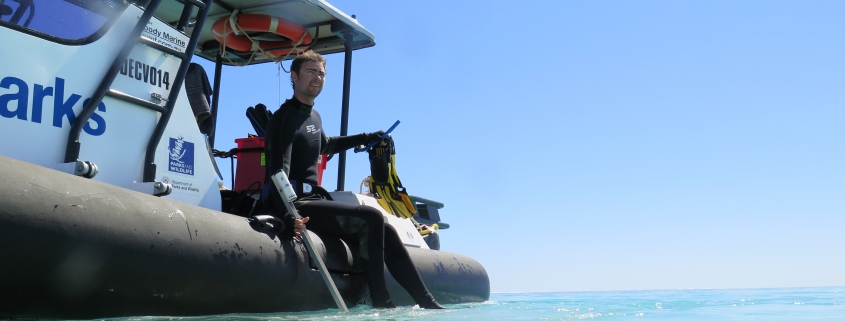Huge state delivers vast array of marine ecosystems
From mud skippers in Kimberley mangroves to orcas in south coast canyons and bizarre looking sea pigs in the deep ocean, Western Australia with its 12,500 kilometre coastline, boasts a vast array of ecosystems, according to marine scientist Dr Tom Holmes.
“In fact, if you include the islands, WA’s coastline is closer to 20,000km which is equivalent to almost half the circumference of the earth,” Dr Holmes said.
In a recorded talk to students, as part of the Western Australian Marine Science Institution’s Thinking Blue series, he discussed WA’s coral reefs, estuaries, mangroves and deep-sea ecosystems.
“There are more than 3,000 species of fish in Western Australia and there are a large number of animal and plants that are not found anywhere else in the world,” Dr Holmes said.
Thinking Blue is WAMSI’s school outreach program which allows students to hear from the state’s top marine scientists on a range of topics. It’s run with passionate educator and marine scientist John Ryan, who is a teacher at Sacred Heart College in Sorrento.
Dr Holmes, the Marine Science Program Leader at the Department of Biodiversity, Conservation and Attractions, was the first speaker in the latest series of talks and told the students the state they lived in boasted eight of Australia’s 15 biodiversity hotspots.
He explained that mangroves, which are predominantly in the north of the state, supported a lot of life including molluscs, birds and mud skippers. Roots from the plants emerged from the sediment trapping organic matter and allowing the plant to breathe.
“Around Roebuck Bay near Broome scientists have found mangroves are an important area for juvenile green turtles and the area is like a nursery or creche for the animals.”
“There are 13 species of mangroves in the Kimberley and six or seven in the Pilbara.”
Speaking about estuaries, Dr Holmes said they contained a ‘mix of fresh and saltwater species’. One of these was the sawfish, which was a threatened species.
Dr Holmes shared photographs of life in the depths of the Indian Ocean including the sea pig, which is a pink coloured sea cucumber with modified legs and face tentacles.
“It’s a complete alien world at those depths where animals have adapted to live where the environment is cold, with high pressure, low oxygen and low light,” Dr Holmes said.
His talk also covered Western Australia’s spectacular coral reefs, of which Ningaloo is the most famous. He also explained that the biggest individual plant in the world was in WA, a seagrass in the sheltered embayments of Shark Bay.
“This plant has cloned itself over an enormous scale and is now 180km long.”
Dr Holmes finished his lecture, which will be shared with other schools and on the WAMSI website, by taking questions including one from a student about how they could find work in marine science.
He explained he grew up three hours from Queensland’s spectacular coast and learned to dive by retrieving golf balls. Once he had the chance to dive in the ocean, he was hooked on marine life and went on to study marine science.
He said it was a competitive area and it helped to get higher education qualifications.
“But there are many other jobs in this area that don’t require a doctorate including in policy and out in the field as a ranger.
“Get experience where you can, perhaps work towards a skipper’s ticket. It all helps.”
Check out Dr Tom Holmes’ Thinking Blue talk here:

